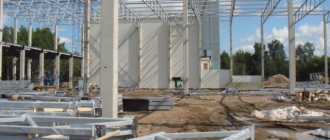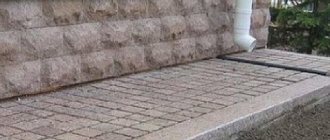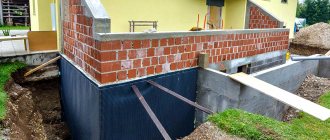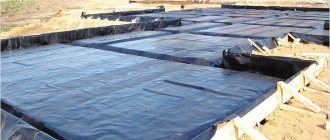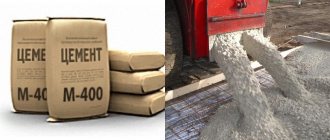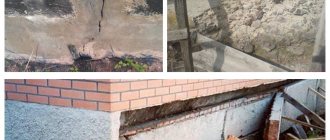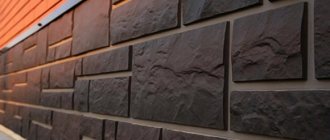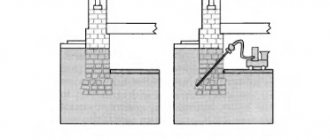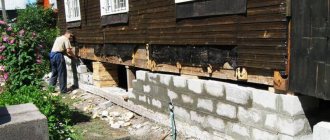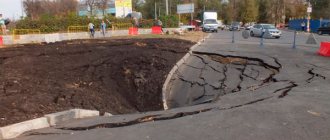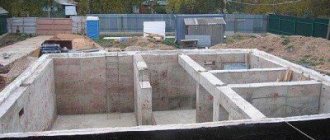The load-bearing capacity of soils is a load acting per unit volume of soil and not leading to unusual shrinkage and deformation of the base. Bearing capacity directly depends on the type and composition of the soil, the characteristics of the layers, the level of groundwater, and the depth of freezing of the ground.
The reliability, functionality, safety and durability of the structure depend on how stable the soil under the building is. Therefore, before starting the design and construction of a structure, it is necessary to check the strength of the foundation, how the soil will withstand the load from the entire structure.
What is soil bearing capacity and what does it affect?
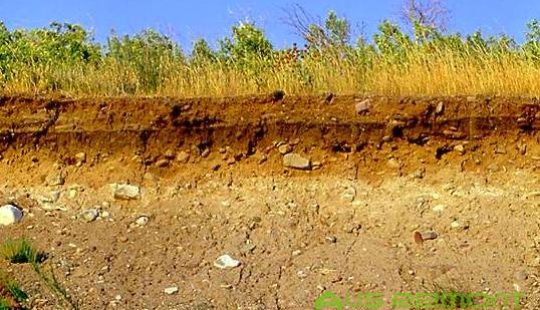
The choice of foundation type depends on the bearing capacity of the soil.
The concept is considered as the pressure perceived by a unit area of the base, at which it does not deform and does not lead to the destruction of the structure. Geologists examine soil to determine its properties and calculate load-bearing characteristics.
The sensitivity of the soil to pressure depends on the conditions:
- soil type;
- massiveness of the layer;
- location mark;
- indicators of the underlying formation;
- soil water level;
- depth of freezing of the ground;
- rock density.
The load-bearing capacity of wet and dry soil is different, because When saturated with moisture, fluidity increases and load resistance decreases. If the layer is in contact with liquid, it is classified as saturated. The exception is sandy coarse and medium-grained soils, which are not affected by deformation since they allow moisture to pass through rather than accumulate it.
Surveys are carried out to determine whether the layer is suitable for installing the foundation or whether it needs to be strengthened to increase its load-bearing capacity. Support elements are not designed at depths where different layers border. The base of the foundation is laid below the level of soil moisture, since saturated rocks swell when frozen.
The sensitivity of the soil to loads is reduced by artificial compaction or the introduction of chemical modifiers. In the first case, piles are driven in to reduce the volume of voids in the soil. Chemical reagents promote adhesion (cohesion) of individual soil particles.
The influence of soil moisture on their bearing properties
The water content in the soil plays a very important role. The ability of soils to retain moisture depends on the type and variety of soil, its density or porosity. Soil moisture changes seasonally throughout the year.
Some types of soil in conditions of high humidity become a very difficult option as a base. For example, silty sands and sandy loams may contain large quantities of very fine clay particles. Due to the presence of these small particles, such soils actively absorb and weakly release water. Saturated with water, these small particles begin to play the role of a lubricant between large soil particles. Even with a slight movement of liquid in the formation, they turn into a quicksand state and easily move with water. The foundation may begin to “sink” in such soil or “float away” - move to the side.
When wet, any soil sags and becomes compacted.
During its existence, the soil located below the freezing depth is compacted to the point of “nowhere further.” Nothing changes this state for many, many tens and hundreds of years.
At the same time, the soil located above the freezing depth is constantly saturated with moisture and increases in volume during seasonal freezing. Moisture in the pores increases the volume of these pores by 10%.
Thus, the skeleton of the soil located above the freezing line “shakes up” every year, becoming more porous.
For example, clay soil located below the freezing point has minimal porosity and maximum strength, but the same soil located above the freezing point, which serves as the basis for shallow foundations, has extremely high porosity.
With a high degree of probability, sandy loam and clay soils for a shallow foundation can be considered loose.
Is it necessary to conduct soil tests at the base of the foundation?
People often ask: “Why do soil tests? It is enough to design a foundation for soil with the worst bearing capacity.”
Indeed, many design organizations offer ready-made house designs with slab foundations designed for the worst soil construction conditions. But, from the experience of design and construction, it is known that the more information is available on the soil conditions of the site being built, the lower the costs required for the construction of foundations.
It is more profitable to spend insignificant costs on testing soils selected by the developer from pits and select a foundation based on specific data than to use a powerful but expensive foundation without any justification.
This benefit is especially noticeable during the construction of two- and three-story buildings with walls made of brick and concrete with reinforced concrete floors.
For lighter buildings, you can choose a foundation based on indicative soil data collected by the developer himself.
Improving the soil at the base of the foundation
When designing a foundation, it is imperative to consider the possibility of improving the suitability of the soil for resting the foundation on it. It is often beneficial to strengthen the soil, which will allow for a simple and reliable foundation.
In case of weak and heaving soils, it makes sense to focus first of all on improving the characteristics of the foundation soil, and only then on calculating the thickness-width of the foundation strip and its reinforcement.
Here is a short list of measures that can be used to improve the characteristics of the foundation soil.
On soft soils:
- Construction of pillows from coarse sand and crushed stone. Sometimes it makes sense to completely replace a weak layer within the base with bulk non-heaving soil with better characteristics.
- Compacting the soil (tamping) if necessary.
Sand cushions placed under foundations perform three functions:
1. They increase the load-bearing capacity of the foundation, which makes it possible to reduce the width of the foundation and, as a consequence, the consumption of concrete for its construction;
2. Replace part of the heaving soil with non-heaving soil, which leads to a reduction in heaving deformations of the base;
3. Reduce waterlogging of the soil when it thaws in the spring, which has a great influence on foundation settlements;
The thickness of the cushion must provide the necessary load-bearing capacity of the soft soil underlying it, and also limit the absolute and relative heaving deformations to the permissible limits regulated by standards.
Read about the effect of frost heaving on the foundation in the article:
Next article:
The right foundation for a wooden, frame house or bathhouse
Previous article:
Determination of soil density and groundwater level
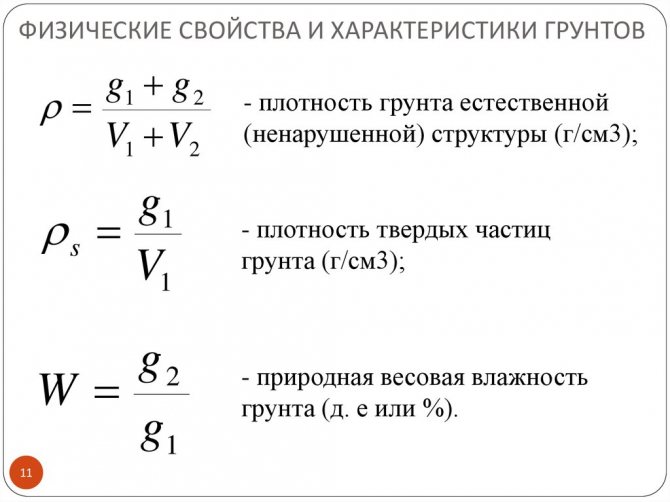
Density is determined depending on the porosity of the base. The soil has solid parts, between them there are cavities filled with water or air, depending on the conditions. If the maximum permissible load is exceeded, the shifts will lead to the destruction of the house. Dense soils with a small number or single cavities are considered to be the most durable foundations.
Density is found by the ratio of the weight of a soil sample at standard moisture to the volume it occupies. The calculation is made using the formula p = B / V, where:
- B is the weight of the soil in its natural state, g;
- V—volume, cm3.
Rocks that lie shallow from the surface are considered loose; as the elevation decreases, the soils become thicker, more reliable and stronger, because overlying strata put pressure on them. In Russia there are sands and clays, there are peat bogs, marshy areas and regions with rocky formations.
Ground fluids are found in weak and loose rocks or cracks in dense formations. Soil moisture usually rises gradually and does not have pressure.
The standing level depends on factors:
- precipitation, evaporation;
- air temperature, atmospheric pressure;
- changes in the condition of water bodies;
- economic processes of human activity.
Moisture inside the layers can be aggressive and contain acids, alkalis, sulfates, carbon dioxide - such additives destroy concrete and metal foundations. The liquid level is determined by drilling pits in the field, which are removed several meters so that they are below the expected support level. The well is covered and left for 5–7 days. If no water is found in it, the soil does not contain moisture. In another case, to carry out construction work according to the rules, drainage (water drainage system) is required.
Soil structure and physical characteristics
Soil consists of three components: solid particles, water and gas. Solid particles mainly determine the properties of the soil, and water and gas components can significantly change them. Solid particles in soil form a spongy structure. The denser they themselves are and the closer they fit to each other, the higher the strength of their adhesion, the denser the soil as a whole. The density of a kind of “sponge” increases with depth – the upper layers exert pressure on the lower ones. However, this factor is not so significant at the depths at which the foundation is laid.
Water enters the soil from the atmosphere (rain, melting snow) or rises from deep sources due to the capillary structure of the soil. The higher the groundwater table, the more saturated the top layer of soil is with water.
Air fills the porous structure of the soil - the looser the soil, the more air it contains.
To study soils, their physical and mechanical characteristics are taken into account. Physical:
- Density of the particles themselves
- Sponge density
- Humidity
- Porosity
- Plastic
Mechanical:
- Specific strain
- Specific particle cohesion
- Angle of internal friction
How to determine the bearing capacity of the soil under the foundation yourself
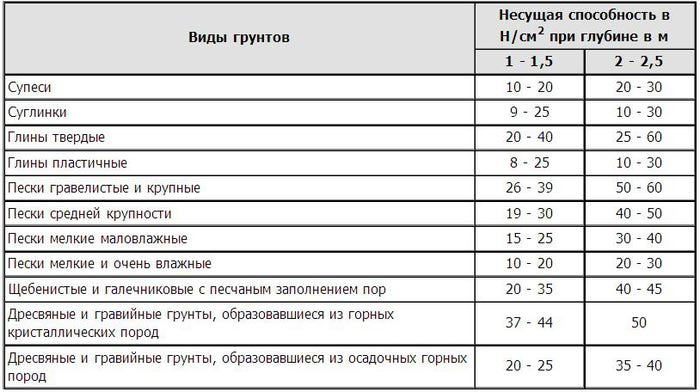
Load-bearing capacity is the basis for calculations during the design process. Soils are classified within the framework of the information in the document GOST 25.100-2011 “Soils. Classification". Pressure resistance standards are found in the tables of soil load of materials SP 22.133.30-2016 “Foundation of buildings and structures”. Standard calculation modules, formulas, and coefficients are also provided here.
The bearing capacity is found by the mathematical expression R = R0 · (1 + K · (B -100) / 100) · (N + 200) / 2 · 200 - for a depth of up to two meters, and by the formula R = R0 · (1 + K · (B -100) / 100) + K2 Q (N – 200) - if the structure is immersed more than two meters, where:
- R0 - resistance to load along the vertical axis, contained in the tables and determined by the type of soil;
- K2 - used for calculations in stable layers;
- K is the correction factor from the SP tables for the breed variety;
- B is the transverse dimension of the bottom of the foundation;
- N is the immersion depth of the support;
- Q is the coefficient to find the calculated average specific gravity of the soil from the top of the ground to the base of the foundation.
You can determine the type of soil yourself. They take soil from the well at the depth of the support, moisten it with water and roll it into a rope, then connect it into a ring. The element is without cracks, easily connected - the soil is cohesive, most often it is clay. When bending, cracks appear, which means that you have a mixture of clay and sand in your hands, the latter contains 10 - 30%. It is difficult to roll a rope, and it is impossible to connect it with a ring - the soil is sandy.
Next, use SNiP tables of soil bearing capacity, where the required value can be found by soil type.
Soil types
The structure of soils depends significantly on the geological history of the area. According to the generally accepted theory, the solidification of the Earth led to the formation of a monolithic layer of the lithosphere, which was subsequently destroyed under the influence of the atmosphere (wind, rain, sun, temperature fluctuations) - up to the formation of the smallest particles from the mountain monolith.
The stages of such destruction of entire rocks were reflected in the different properties of a specific area of the earth's surface.
Soils are divided into:
- Rocky - a massif of rocks with high density. Monolithic and incompressible.
- Coarse - a mixture of large stones and particles, with the inclusion of small ones. It has high porosity and low compressibility.
- Sandy - consist of small solid particles that are practically unrelated to each other. They are characterized by high flowability and density in volume.
- Clayey - consist of the smallest (finely dispersed) particles (less than 0.1 mm in cross-section), strongly interconnected due to the surface tension forces of the water present in their thickness. Characterized by high compressibility and plasticity.
Calculation of the bearing capacity of a pile-screw foundation
Despite the fact that pile-screw foundations are quite reliable, and their structural features can be calculated using a special calculator, the holding characteristics of the foundation must be determined. The supporting properties of a screw pile directly depend on the type of soil.
Table: Determination of load-bearing characteristics of a screw pile
| The soil | Structure | Design soil resistance (kg/cm²) | Supporting capacity of a screw pile (t), at the depth of the blade (cm) | |||
| 150 | 200 | 250 | 300 | |||
| Clay | Semi-solid | 6 | 4,6 | 5,5 | 6,15 | 6,6 |
| Tight | 5 | 4,15 | 4,8 | 5,7 | 6,4 | |
| Soft | 4 | 3,65 | 4,45 | 5,05 | 5,85 | |
| Sandy loams and loams | Semi-solid | 5,5 | 4,35 | 5,15 | 5,85 | 6,55 |
| Tight | 4,5 | 3,8 | 4,7 | 5,4 | 6,05 | |
| Soft | 3,5 | 3,4 | 4,25 | 4,7 | 5,4 | |
| Loess | Soft | 1 | 2,25 | 2,8 | 3,65 | 4,4 |
| Sand | Average | 15 | 9,05 | 9,6 | 10,5 | 11,0 |
| Small | 8 | 5,65 | 6,35 | 7,05 | 7,75 | |
| Dusty | 5 | 4,1 | 4,95 | 5,65 | 6,2 | |
The calculation of any foundation is carried out using a single method; a special calculator can be used here.

Pile-screw foundation
Calculation sequence:
- determination of soil resistance coefficient;
- calculation of the mass of the building;
- determination of the pressure exerted by the weight of the building on the support;
- comparison of the holding characteristics of the foundation and the pressure exerted by the building;
- adjustment of the foundation design or pile parameters.
Correct selection and calculation of a screw pile will allow the homeowner to save money on basic home repair work. Structurally, piles differ in the type of soil where the support is installed:
- for permafrost;
- for heaving and waterlogged soils.
Snow loads
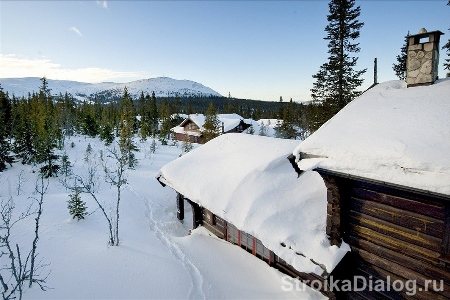
The snow cover that accumulates on the roof during the cold season must be taken into account when calculating the load on the ground. The amount of snow varies from region to region. For design, standard values of snow cover weight taken from building regulations are used. In SNiP, the territory is divided into snow areas and the standard load in them is indicated:
- I – 80 kg/m2;
- II – 120 kg/m2;
- III – 180 kg/m2;
- IV – 240 kg/m2;
- V – 320 kg/m2;
- VI – 400 kg/m2;
- VII – 480 kg/m2;
- VIII – 560 kg/m2.
It is better to look at the location of areas on a map in regulatory documents. In general, for the European part, the southern regions are classified as regions I–II (except for the mountainous part, which belongs to the VIII region), the central regions (including Moscow and St. Petersburg) as III, Tver, Nizhny Novgorod, Kazan as IV, north to the V snow region.
In addition, the roof structure and its slope are also taken into account. For this purpose, the transition coefficient μ (mu) is used. It amounts to:
- with a slope of up to 30° μ=1;
- 30–60° μ=0.7:
- steeper than 60° – μ=0.
Having all the values - roof area, standard values of snow cover weight, slope - the maximum load on the foundation from snow is calculated: S=Snorm · μ. With a roof area of 30 m2 with a slope of 30° in Moscow, the total value will be: S = 180 × 1 × 30 = 5400 kg.
Characteristics of foundations of building structures
In addition to determining the reference characteristics of the base level, it is necessary to take into account the risks that could lead to deformation of the building. To do this, check the soil according to the following parameters:
- density - determined by the difficulty of taking a sample;
- fluidity, the easier the soil sticks to the tool and lasts longer, the higher the fluidity;
- porosity is determined by comparing the volumes of crushed rock and non-crushed rock;
- ability to swell, change in volume and shape when soaked, shows a tendency to subsidence;
- heaving, under the influence of low temperature, ice crystals form in the structure, leading to a change in the volume and shape of the soil;
- ability to subsidence, the possibility of vertical shift under the influence of mass when the physical properties of the soil change.
It is difficult for a non-specialist to accurately determine the construction characteristics of the foundation, therefore the minimum parameter values are indicated in regulatory documents. This allows you to avoid risk during the construction of buildings and increase the safety margin of the structure.
The calculation of the foundation of buildings is carried out on the basis of:
- type of soil (natural or artificial);
- dimensions, design and material of the foundation;
The calculation must take into account two limiting states of the foundation, these are:
- bearing capacity of the foundation;
- deformation processes.
Using a calculator to calculate the bearing capacity of the soil layer, you can determine the level of soil resistance to vertical loads. The larger the particles that make up the base, the higher the load-bearing capacity of the base level.
Table: Sizes and percentage of soil particles
| Types of soil | Particle sizes, mm | Particle content in % |
| Clay | up to 0.002 | – |
| Silty organic | up to 0.01 | – |
| Silty inorganic | from 0.002 to 0.05 | – |
| Sandy, gravelly | more than 2 | from 25 |
| Sandy, large | more than 0.5 | from 50 |
| Sandy, medium | more than 0.25 | from 50 |
| Sandy, fine | more than 0.1 | from 75 |
| Sandy dusty | more than 0.1 | up to 75 |
| Boulder, blocky | more than 200 | from 50 |
| Pebble, crushed stone | more than 10 | from 50 |
| Gravel, wood | more than 2 | from 50 |
Types of soils
What types of soils are there?
- Rocky soils
are ideal. Huge load-bearing capacity and no heaving - cartilaginous soils
(gravel, stone fragments) have a high bearing capacity and are not heaving. You can use a strip foundation to a depth of at least 50 cm. - Sandy soils
are easily washed out, allow water to pass through well, become significantly compacted under load, and freeze slightly. Sandy soils are good bases for foundations. Depending on the particle size, sand grains are divided into subtypes: gravelly sand (0.25-5.0 mm); - coarse sands (0.25-2 mm);
- medium-sized sands (0.1-1 mm);
- silty and fine sands (less than 0.1 mm), close to clay soils
capable of shrinking, eroding, swelling when freezing, and depending on different saturation with water to varying degrees. Because of this, clay soils are not very good for foundations. Therefore, foundations on clay soils often need to be laid below the freezing depth. Types of clay soils:
- sandy loam
Types of clay soils
| Priming | Number of clay particles | Determination method |
| Sandy loam | 3-10 % | Difficult to roll or does not roll into cord |
| Loams | 10-30% | Can be rolled into a cord with a diameter greater than 1mm |
| Clays | over 30% | When rolled out, it produces a strong long cord with a diameter of less than 1 mm |
. A special type of soil consisting of sand and mineral salts, which are easily destroyed when moistened or under increased load. Loess differs in that if it gets very wet, it sag catastrophically.
. Top fertile layer of soil. Completely unsuitable for construction. Construction of a foundation on such soil is not allowed; it is necessary to dig to other deeper layers of soil.
